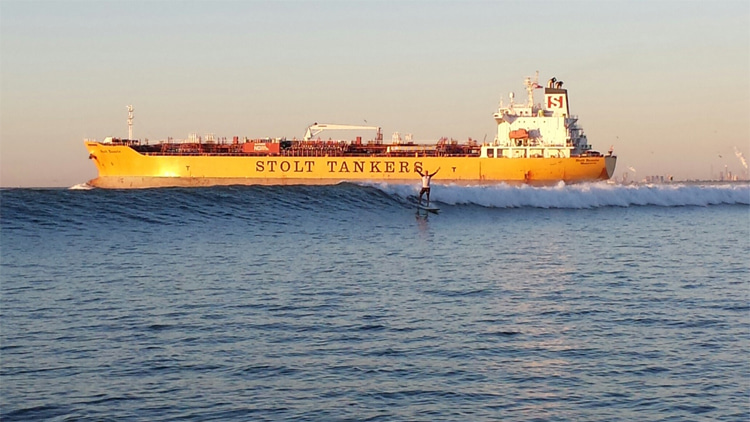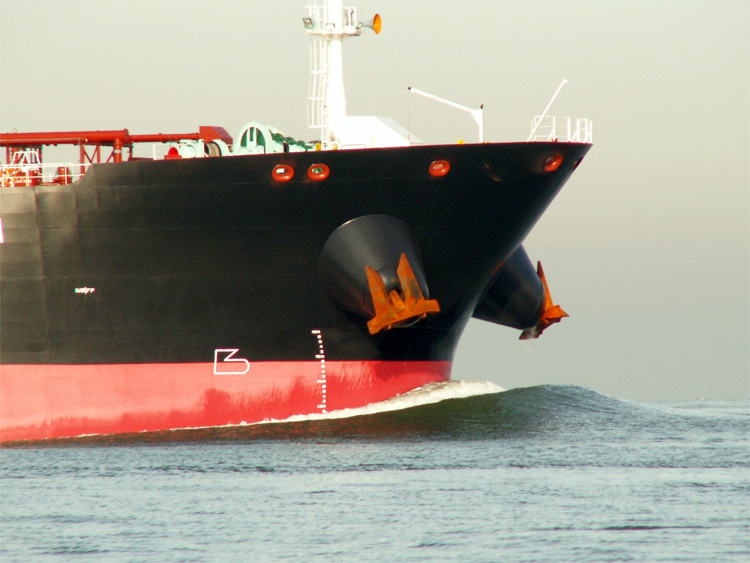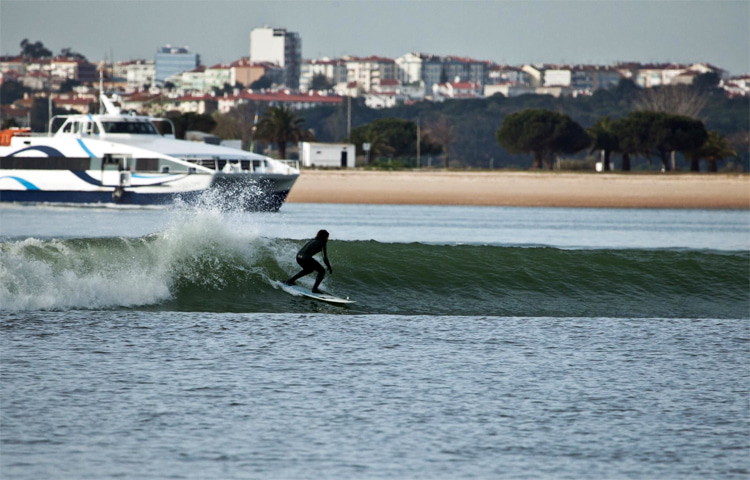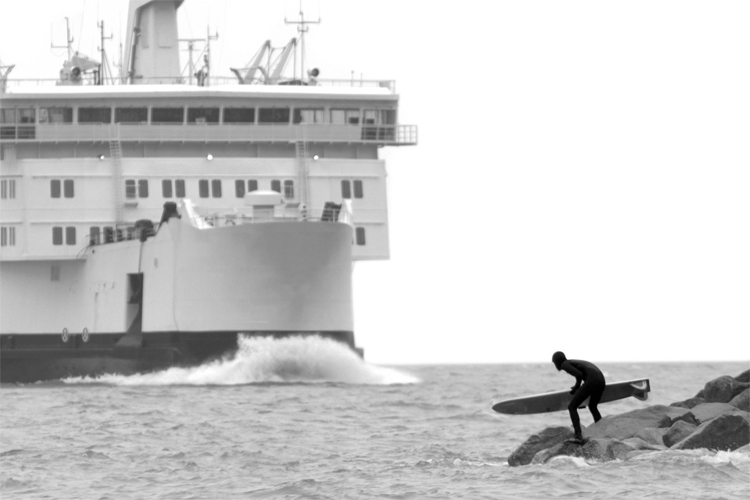Long are the days when surfing was the sport of riding ocean waves. Today, it's more than that - it's about choosing one of the many ways to ride a wave.
Whether in the ocean, river, or inland, there are multiple options to get your surfboard moving on novelty waves.
A new type of surfing emerged in the 1960s for outdoor enthusiasts and adventurers. It's called ferry or tanker surfing.
It might sound like a post-industrial or post-apocalyptical activity, but it's more real and common than you might think.
In the heart of busy harbors and along the endless waterways where ferries and tankers weave their daily routes, there are exciting opportunities for wave-riding addicts.
When waves generated by the massive vessels that dominate these urban landscapes form, there's a growing number of surfers tracking around their route.
Ferry and tanker surfing take advantage of the substantial wakes created by these vessels, transforming urban waterways into unexpected surfing hotspots.
The alternative surfing niche began as a curiosity, a spontaneous decision by surfers who found themselves near these colossal ships and wondered, "What if?"
Experimental rides quickly turned into a passionate pursuit, with surfers from all over the world seeking out the schedules and routes of ferries and tankers and timing them with tides to catch their artificially created waves.

The History of Tanker Surfing
Tanker surfing can be traced back to the late 1960s in Texas, when a few intrepid surfers, who also fished in the bay waters, began riding the waves generated by passing ships.
Unlike today's open-water practices, these early surfers took to the shorelines of Galveston Bay's Redfish Island and Atkinson Island.
Some even caught waves along the western shores of the bay and near the Texas City Dike.
During the 1960s and 1970s, the ships were smaller and less frequent, producing modest waves that, while surfable, also contributed to shoreline erosion.
By the late 1970s, this erosion had destroyed Redfish Island and other key surfing spots, causing both interest and waves to wane as the practice had not yet migrated to open waters.
The revival of tanker surfing came with significant dredging operations, which allowed for deeper channels accommodating larger ships.
These operations created new shoals and spoil banks, offering new opportunities for surfing.
Today, much larger container and tanker ships pass through deeper and wider channels, generating substantial waves that break over these submerged shoals and newly formed islands.
The resurgence of tanker surfing gained public attention in 2001 when the story was featured on Surfline.
This coverage stemmed from a fax received by surfer James Fulbright, who, along with friends John Benson and Peter Davis, had been exploring ship waves in the Houston Ship Channel for years.
The fax, sent by John Paul Beegly, producer of what was initially dubbed "The Endless Summer III" and later renamed "Step Into Liquid," sparked broader interest.
Despite an initial missed opportunity to feature tanker surfing in the film "Thicker Than Water" due to timing constraints, the buzz continued.
The release of "Step Into Liquid" in 2003, showcasing this unique surfing niche, propelled Fulbright, Benson, and Davis into the spotlight.
They became the focus of numerous media features, including appearances on CBS Evening News, ABC News, and Good Morning America, where Fulbright was famously shown surfing with dolphins.

The Mechanics of the Wake
The waves created by ferries and tankers directly result from their size and speed.
As these massive vessels cut through the water, they displace a significant amount of it, creating a rolling wake that, under the right conditions, can rival some of the natural waves found on beaches.
These waves are typically more uniform and predictable, allowing surfers to anticipate and position themselves perfectly to catch the ride.
Ferry wakes tend to be smaller but more frequent, providing continuous practice and improvement opportunities.
Tanker wakes, on the other hand, can be much larger and more powerful, offering a more challenging and thrilling experience.
Longboards and funboards are usually the best equipment, as these waves tend to be fatter and mellower than, for instance, beach break waves.
Nevertheless, you might be able to ride a shortboard in some cases.
Ferry and tanker surfing is not without its challenges and dangers.
The proximity to large, moving vessels requires a heightened awareness and respect for the power of these ships.
Safety is paramount, with surfers needing to stay vigilant and maintain a safe distance to avoid the dangers of collision or getting caught in a ship's path.
Also, having a jet ski or speedboat around for support is recommended in case of an emergency.
The Best Ship-Generated Wave Spots
Picture surfers carving through waves with skyscrapers looming in the background or gliding past piers bustling with activity.
It's a juxtaposition that captures the spirit of modern adventure - finding nature's rhythms within the man-made world.
Cities like New York, San Francisco, and Sydney, with their extensive waterways and heavy ship traffic, have become prime locations for this burgeoning sport.
Enthusiasts share tips on the best spots and times to catch the ideal wake, fostering a community of urban surfers who are redefining what it means to ride a wave.
USA
The United States has one of the most active ferry and tanker surfing scenes on the planet.
The East Coast is well known for its quality vessel-generated waves.
The Nantucket Express ferry in Massachusetts is a great way to start.
The traditional, fast, and high-speed boats sail on regular schedules, allowing surfers to plan their sessions.
In Atlantic City and Cape May, New Jersey, there are many ferries and cargo ships making their way in and out of Delaware Bay.
It's actually one of the most ridden regions for these types of waves.
In the Pamlico Sound and Savannah area, in North Carolina and South Carolina, there are also many large vessels and shipping activity generating massive, endless riding wakes.
In Galveston, Texas, there's even a business, Tanker Surf Charters, taking surfers on expeditions to the best spots.
On the West Coast, Puget Sound, Seattle, there's a community chasing tug and freighter waves in Ballard and Salmon Bay.
In the San Francisco Bay area, look for the ferry-generated wakes near Mare Island and Larkspur.

Europe
The Old Continent also has a few popular spots for riding these novelty waves.
In Portugal, "Gasoline" is a famous surf spot at Tejo River's Praia do Bico Mexilhoeiro, with artificial waves generated by the ferry that connects Barreiro and Lisbon.
In Dublin, the ferry connecting Ireland to the United Kingdom also generates waves that can be ridden at Dollymount Beach, near Bulls Island, near the long rock jetty that extends into Dublin Bay.
In Warnemünde, Germany, there was a ferry coming from Gedser in Denmark and entering the Baltic Sea channel toward Rostock. It produced a wave that was ridden for a while and documented on the movie "Surf Berlin."
Australia
There is also at least one ferry wave surfing spot Downunder.
In Cleveland, Queensland, local surfers have been shooting these shark-infested waves at least since 2003, when pro surfer Bede Durbidge unveiled it to the world while making the connection to North Stradbroke Island.
Words by Luís MP | Founder of SurferToday.com


